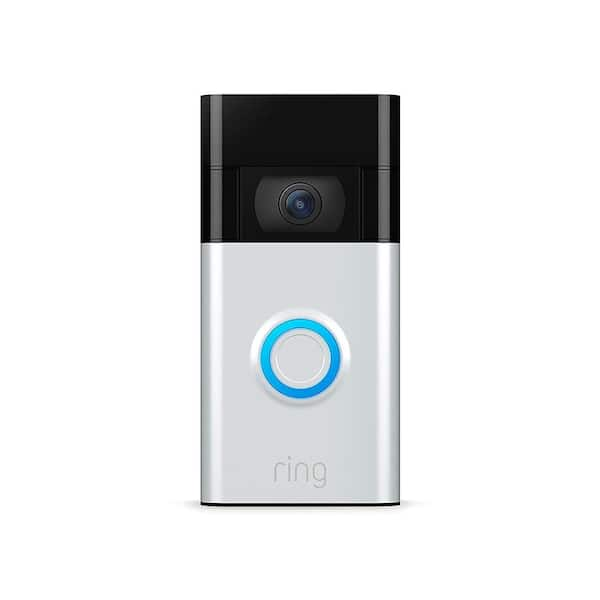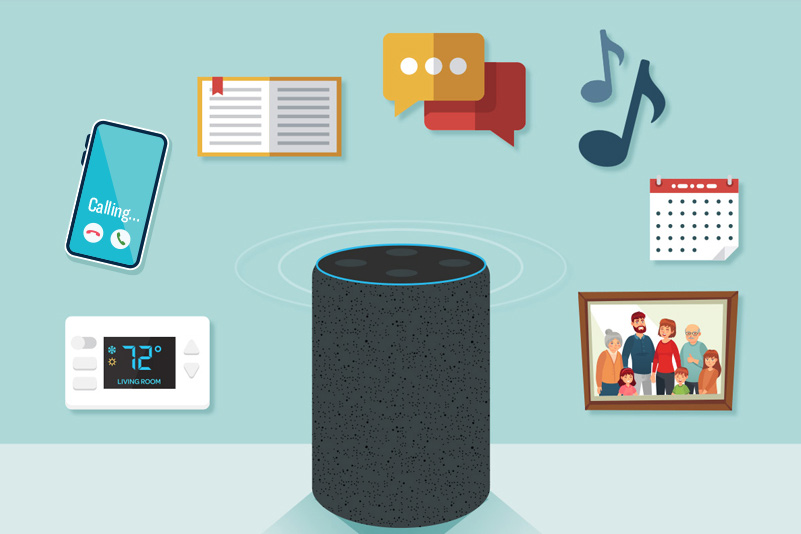The landscape of home automation is on the cusp of a seismic shift, a transformation as significant as the move from manual switches to voice-activated commands. For years, the promise of the “smart home” has been one of convenience, but it has largely been a reactive relationship: we command, and our devices obey. We ask for the weather, tell a speaker to play a song, or manually set a routine. But a new wave of intelligence, powered by sophisticated, on-device generative AI, is poised to demolish this paradigm. We are entering the era of the proactive, predictive, and truly perceptive home—a home that doesn’t just listen, but understands, anticipates, and acts. This latest chapter in Smart Home AI News isn’t about slightly better speakers or sharper cameras; it’s about embedding a centralized, context-aware intelligence into the very fabric of our living spaces, creating an ambient computing experience that finally fulfills the long-held science-fiction dream of a home that is a true partner in our daily lives.
The Proactive Home: A New Ecosystem Powered by On-Device AI
The next generation of smart home technology is defined by a fundamental architectural change: the move from cloud-dependent processing to powerful, on-device AI. By integrating advanced multimodal AI models—capable of understanding and reasoning across text, audio, video, and other sensor data—directly into devices like cameras, doorbells, and speakers, manufacturers are unlocking unprecedented capabilities. This shift minimizes latency, enhances privacy, and enables a level of contextual awareness previously impossible.
Key Upgrades in the New AI-Powered Lineup
The latest hardware isn’t just an incremental improvement; it’s a platform for this new AI. The latest AI Cameras News highlights devices with 2K or 4K resolution, but their true innovation lies in the onboard Neural Processing Units (NPUs). These specialized chips allow the camera to do more than just detect motion; they can analyze and interpret entire scenes in real-time.
- AI-enabled Cameras & Vision News: Next-gen cameras can now differentiate between a package being delivered, a pet running through the yard, a stranger loitering, and a car pulling into the driveway. Instead of a generic “motion detected” alert, you might receive a notification saying, “A person in a red shirt left a rectangular package on your porch at 2:15 PM.” This level of detail transforms security from a reactive tool to a proactive awareness engine.
- AI Audio / Speakers News: The smart speaker is evolving from a simple command-and-control endpoint into the central hub of the home’s intelligence. As a true AI Companion Device, it can now handle complex, multi-part conversational queries. You could ask, “Summarize what’s happened at home in the last three hours,” and it could synthesize inputs from the doorbell, security cameras, and various AI Sensors & IoT News to give you a complete narrative.
- AI Security Gadgets News: Smart doorbells are becoming gatekeepers with genuine intelligence. They can recognize familiar faces and announce guests by name, handle simple interactions with delivery drivers through pre-set or AI-generated responses, and provide a detailed log of all front-door activity that is searchable by natural language.
This ecosystem works in concert. The devices share contextual information, creating a holistic understanding of the home environment. This is the core principle of ambient computing—technology that is so seamlessly integrated it fades into the background, providing assistance without constant direct interaction.
Under the Hood: The Multimodal AI and Edge Computing Revolution
The magic behind this new generation of smart devices isn’t a single breakthrough but a convergence of several key technologies. Understanding these components reveals why this moment is so pivotal for the future of home automation and why it’s dominating the current cycle of Wearables News and IoT discussions.
The Power of Multimodal Generative AI
At the heart of this revolution are large language models (LLMs) that have evolved to be multimodal. Unlike earlier AI, which specialized in one type of data (e.g., text for chatbots, images for photo recognition), models like Google’s Gemini or OpenAI’s GPT-4o can process and reason across a spectrum of inputs simultaneously. When integrated into a smart home, this means the AI can:

- See and Understand: A camera feed isn’t just pixels; it’s a scene to be interpreted. The AI can see that the kids have left their toys out in the living room.
- Hear and Interpret: The smart speaker can hear the sound of a window breaking and differentiate it from a dish being dropped.
- Synthesize and Act: By combining these inputs, the AI can connect the visual of the toys with the fact that it’s nearly bedtime (from your calendar) and the knowledge that the Robotics Vacuum News indicates the cleaner is scheduled to run. It can then send a gentle reminder to your child’s tablet or through the speaker: “It’s almost time for bed. Let’s remember to put away the toys in the living room so the vacuum can clean up.”
The Critical Shift to AI Edge Devices
Processing this vast amount of sensitive data in the cloud raises significant privacy and security concerns. The solution is edge computing. New AI Edge Devices are equipped with powerful NPUs that allow the majority of AI inference and processing to happen locally, on the device itself. This has several profound benefits:
- Enhanced Privacy: Your personal video feeds and audio conversations don’t need to be constantly streamed to a remote server for analysis. The raw data stays within your home network.
- Increased Speed: Local processing eliminates the latency of a round-trip to the cloud. This means faster responses from your AI Assistants News and real-time alerts from security devices.
- Improved Reliability: The core functions of your smart home can continue to operate even if your internet connection goes down.
This on-device capability is a recurring theme in technology, from AI Phone & Mobile Devices News to the latest in Autonomous Vehicles News, where split-second decisions cannot rely on a cloud connection.
The Tangible Impact: Real-World Scenarios in the AI-Powered Home
Theoretical capabilities are one thing, but the true measure of this technology is how it impacts daily life. These interconnected, intelligent devices enable scenarios that move far beyond simple automation into the realm of genuine assistance and peace of mind.
Case Study 1: The Connected Family and Proactive Security
Imagine you’re at the office and want to check in on things at home. Instead of scrubbing through hours of video footage, you simply ask your phone’s AI assistant, “Give me the home summary for today.” The AI, acting as a central hub, synthesizes data from across the ecosystem:
“Good afternoon. The kids arrived home from school at 3:15 PM. The front door camera noted they were with their friend, Alex. The AI Pet Tech News shows that the dog was fed via the smart feeder at 5:00 PM. A large package was delivered to the back porch at 4:30 PM, and I’ve confirmed it is out of sight from the street. The AI Gardening / Farming Gadgets News also reports that the smart sprinkler system detected high winds and has postponed watering until tomorrow to conserve water. Everything is secure.”
This is not just data; it’s synthesized, actionable information. It covers everything from AI Monitoring Devices News to smart utility management, providing a complete, narrative overview.
Case Study 2: The Intelligent Kitchen and Personalized Wellness

The AI’s reach extends deep into the home, transforming daily routines. In the kitchen, the latest Smart Appliances News features refrigerators with internal cameras. Now, with generative AI, you can ask, “What can I make for a healthy dinner with what’s in the fridge?” The AI analyzes the contents, cross-references it with your dietary preferences and data from your AI Fitness Devices News, and suggests a recipe. It can then send the cooking instructions to your smart display and preheat the oven. This integration of AI Kitchen Gadgets News with Health & BioAI Gadgets News creates a seamless loop between your wellness goals and daily habits. The same intelligence can extend to AI Sleep / Wellness Gadgets News, where the system can correlate your sleep quality with your daily diet or activity levels, offering personalized suggestions.
Case Study 3: Enhanced Accessibility and Independent Living
For families with elderly relatives or individuals with disabilities, this technology can be life-changing. The latest trends in AI for Accessibility Devices News focus on passive monitoring. The home’s AI learns an individual’s daily patterns. If it detects a significant deviation—for instance, if a person hasn’t moved from a room for an unusually long period or if a fall is detected by a combination of camera vision and audio cues—it can initiate a check-in. The smart speaker might ask, “Everything okay in there?” If there’s no response, it can automatically alert a designated family member or emergency services, providing critical context about the situation.
Challenges, Best Practices, and the Road Ahead
While the potential of the AI-powered smart home is immense, its adoption requires careful consideration of several factors. Navigating these challenges thoughtfully will be key to unlocking the full benefits of this new technological wave.
Pros and Cons of the AI-Integrated Home

Pros:
- Unprecedented Convenience: The home anticipates needs, automates complex routines, and provides information proactively.
- Enhanced Security and Awareness: Go beyond simple alerts to a deep, contextual understanding of your home environment.
- Personalization: The system learns your habits and preferences, tailoring its actions to your lifestyle.
- Accessibility: Provides a powerful safety net for independent living and assists individuals with disabilities.
Cons:
- Privacy Concerns: Despite on-device processing, the amount of data being collected is vast. Users must trust manufacturers’ privacy policies and security measures.
- Cost and Complexity: These advanced devices will come at a premium, and setting up a fully integrated ecosystem can be complex.
- Data Security Risks: Any internet-connected device is a potential target for hackers. Robust security is paramount.
- Over-Reliance: A potential for users to become overly dependent on the technology for daily functions.
Tips and Considerations for Adoption
- Start with a Strong Foundation: A robust and secure Wi-Fi network is non-negotiable.
- Prioritize On-Device Processing: When choosing devices, look for those that explicitly advertise local, on-device AI processing to maximize privacy.
- Understand the Ecosystem: Decide on a primary ecosystem (e.g., Google Home, Amazon Alexa, Apple HomeKit) to ensure maximum interoperability. Look for devices that support open standards like Matter.
- Review Privacy Settings: Take the time to go through the privacy settings on every device and app. Understand what data is being collected and how it’s being used. Disable any data sharing that you are not comfortable with.
The future of this space will see even deeper integrations. We can expect to see more advanced AI Personal Robots that do more than vacuum, collaborating with the home AI to perform complex chores. The lines between our physical and digital worlds will blur further with AR/VR AI Gadgets News, allowing users to see data overlays in their homes through Smart Glasses News. The home will become a node in a larger network, communicating with your car and office, a key component of the vision for Smart City / Infrastructure AI Gadgets News.
Conclusion: The Dawn of Ambient Intelligence
The integration of powerful, on-device generative AI into smart home devices marks a pivotal moment in consumer technology. We are moving beyond the novelty of voice commands into an era of true ambient intelligence, where our homes become proactive partners in managing our lives, securing our property, and enhancing our well-being. This new generation of smart cameras, speakers, and sensors represents the building blocks of a home that doesn’t just respond but understands and anticipates. While navigating the critical considerations of privacy and security is paramount, the trajectory is clear. The truly smart home is no longer a distant dream; it’s arriving now, powered by an intelligence that promises to make our living spaces more helpful, intuitive, and seamlessly connected than ever before.










